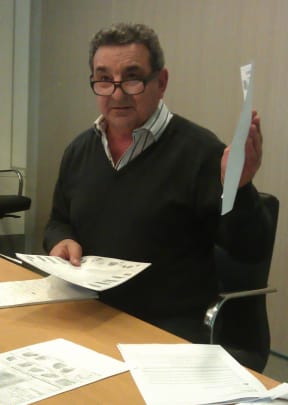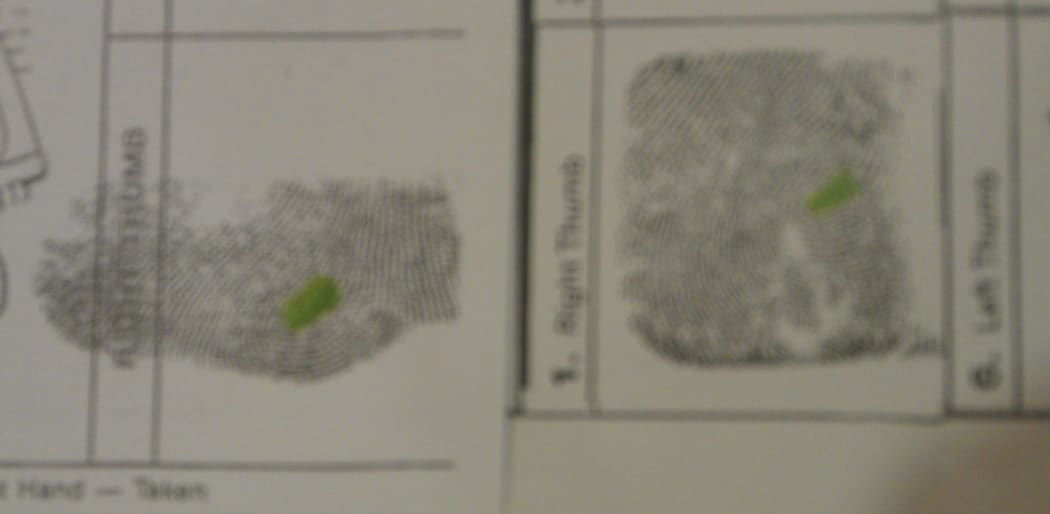Police have rejected claims by a supporter of David Bain who says the public have been misled over new evidence about marks on his father's thumb.
David Bain spent 13 years in prison for murdering his family in Dunedin in 1994, but was found not guilty at a retrial in 2009. His legal team claims his father, Robin Bain, was in fact the killer.

Long-time Bain supporter Joe Karam. Photo: RNZ
Long-time supporter Joe Karam says only one set of Robin Bain's fingerprints were released by police to answer a new theory about the case.
Two weeks ago, David Bain's legal team released evidence showing what they say are gun powder residue marks on the fingers of Robin Bain. Police responded by releasing a fingerprint showing Robin Bain's thumb with a white patchy area which they said was evidence of marks or cuts, not gunpowder.
On Thursday, Mr Karam showed media two sets of fingerprints taken by police the day after the deaths, and again a day later. The first set didn't have any sign of marks.
Mr Karam said it is the first set that have never been shown, which support his theory that Robin Bain killed his family. He was asked why he thinks police released only one of the images.
"For obvious reasons I'd say they were in damage control and it was a snappy decision. There were marks there that gave the impression of damage to the thumb, and I could've given them the benefit of the doubt, but they've now had two weeks to find the other ones."
But Assistant Commissioner Malcolm Burgess said on Thursday that experts decided the first set of fingerprints were not of adequate quality and so they took another set at the mortuary.
M Burgess said the second prints are the ones which have always been referred to by experts working on the case. Police are applying to see the originals of all the prints held by the court.

The prints in question. A white patchy area is shown on the right. Photo: RNZ

